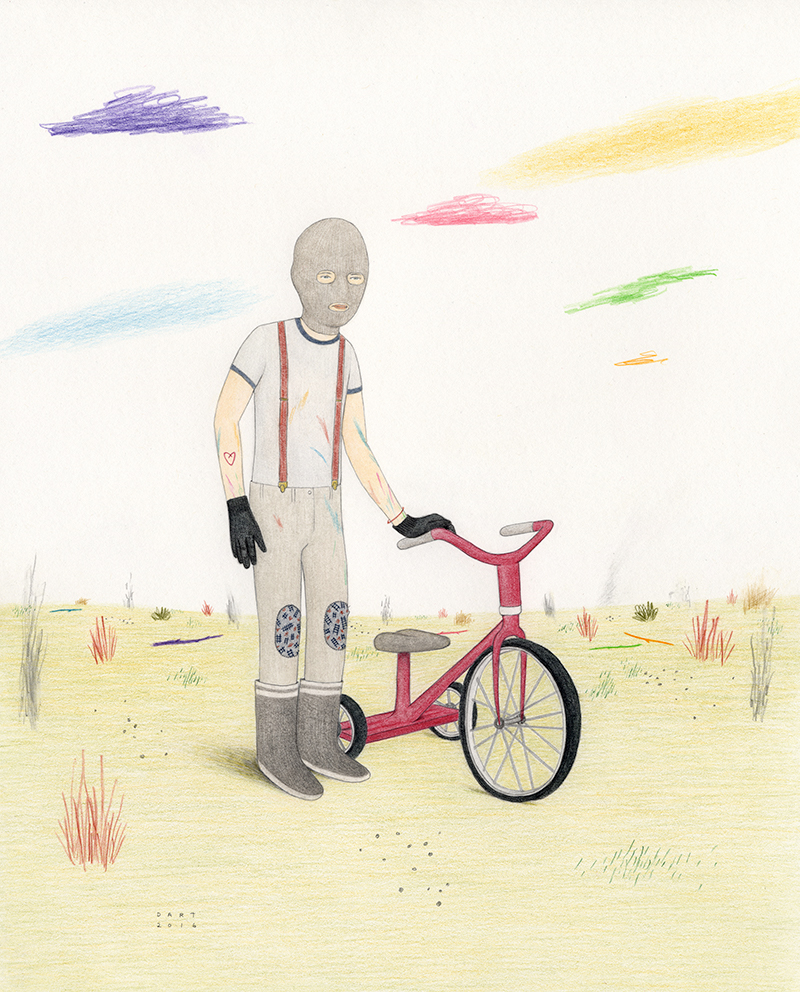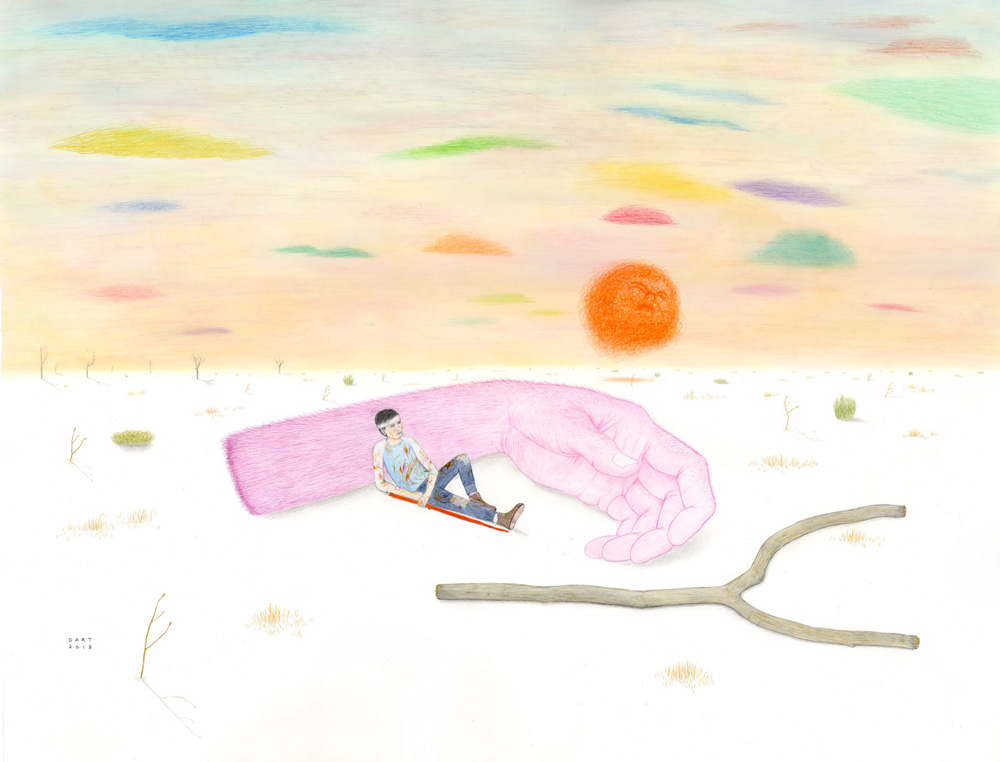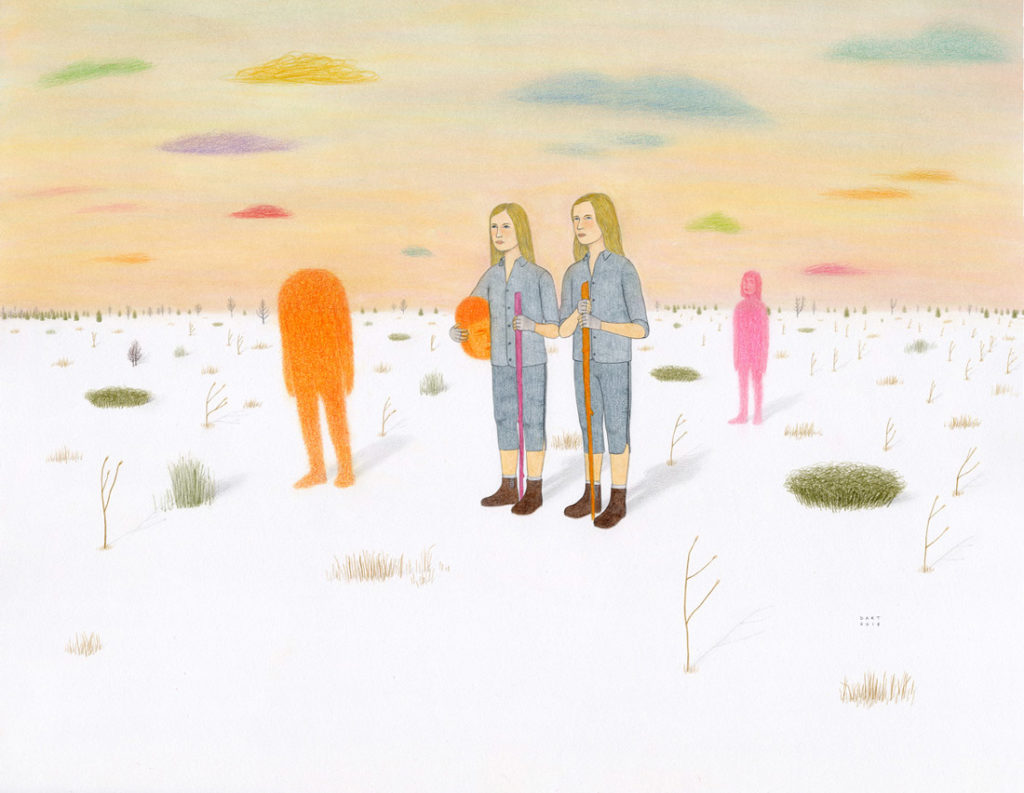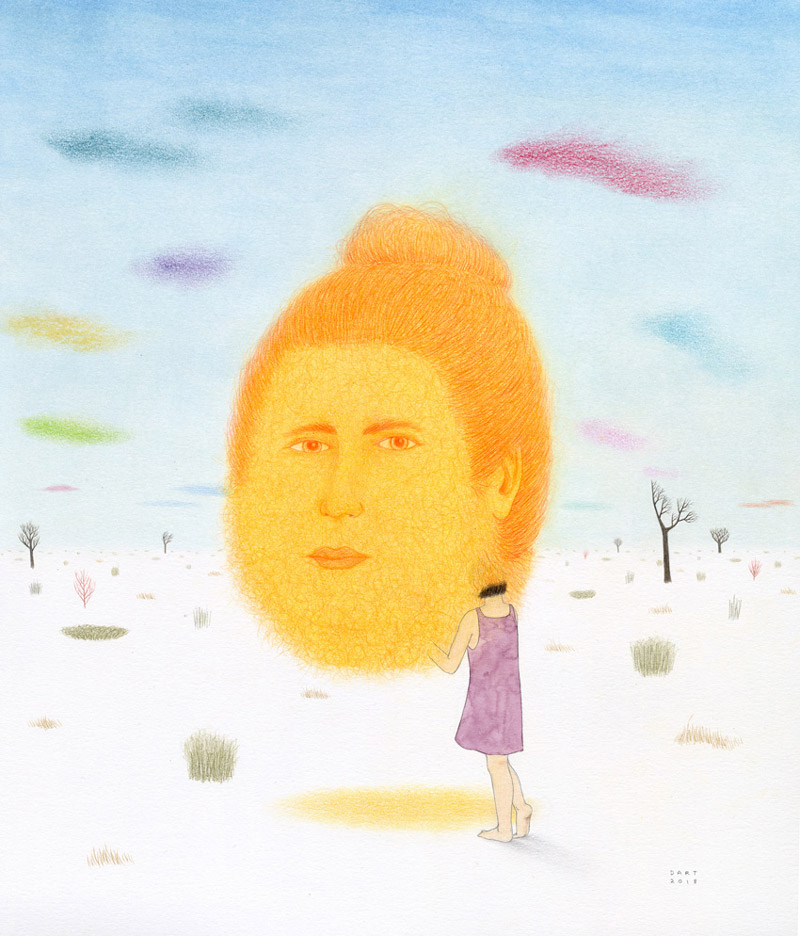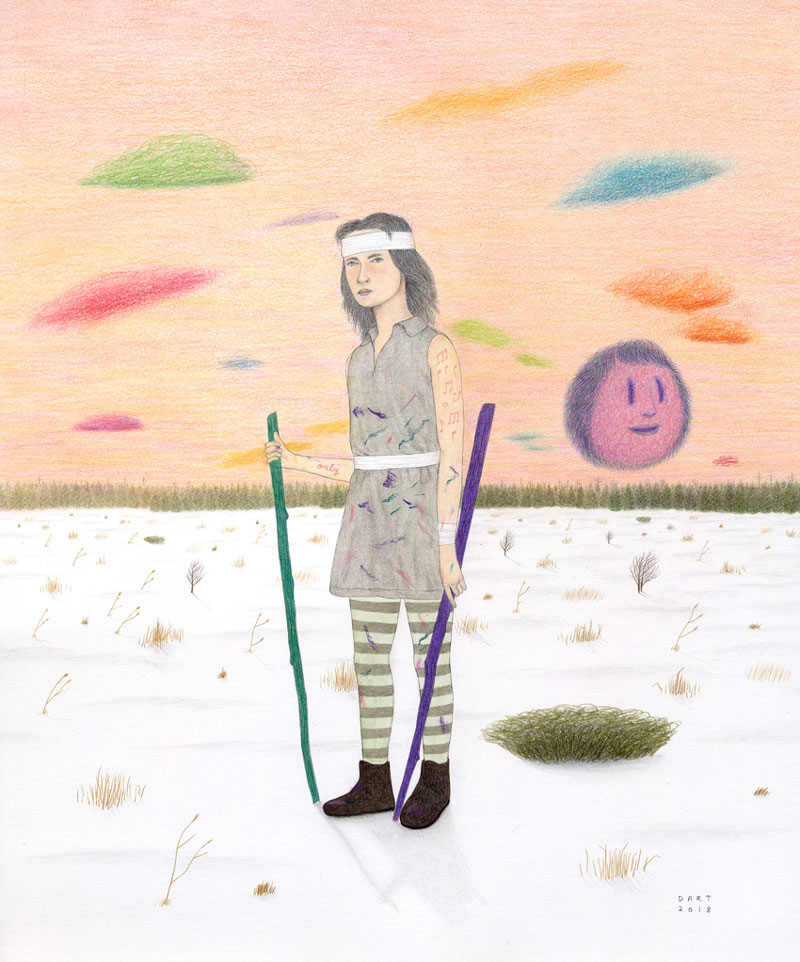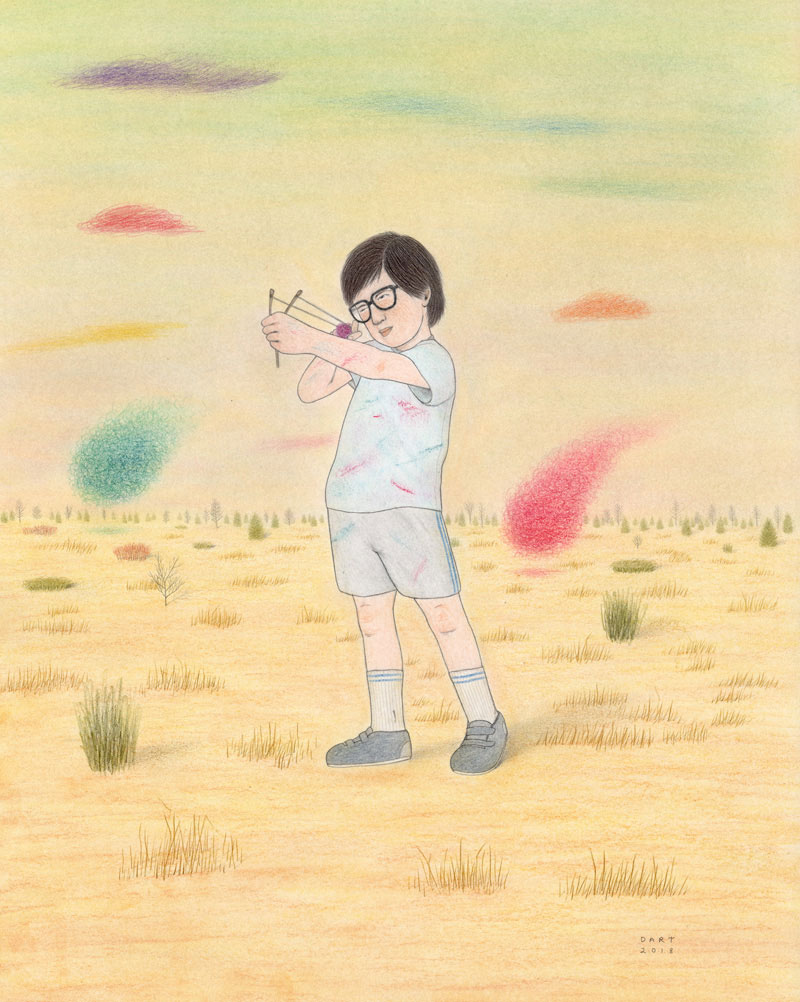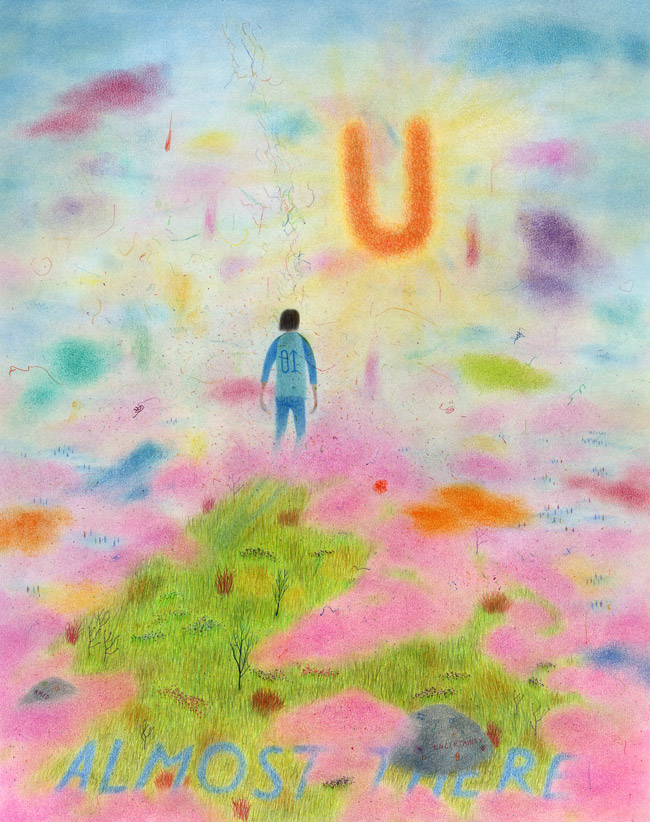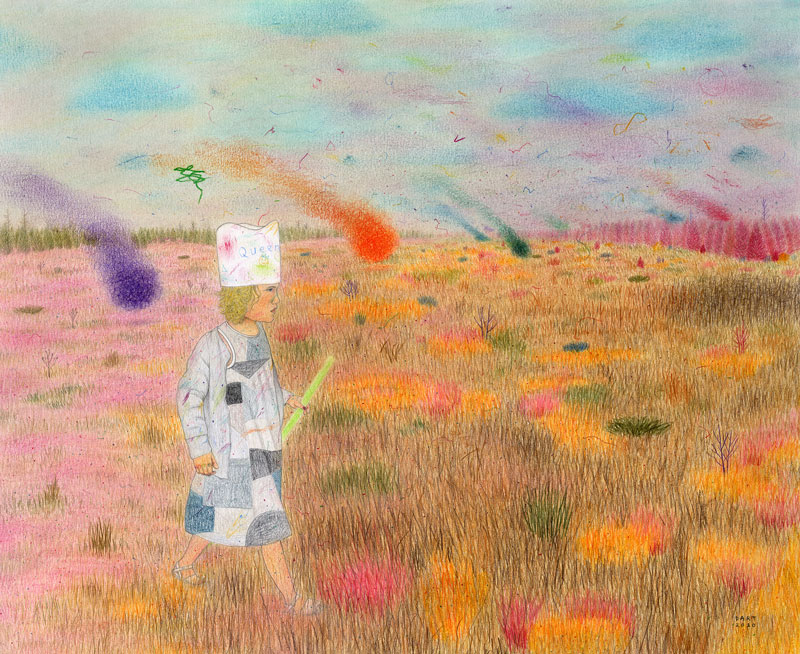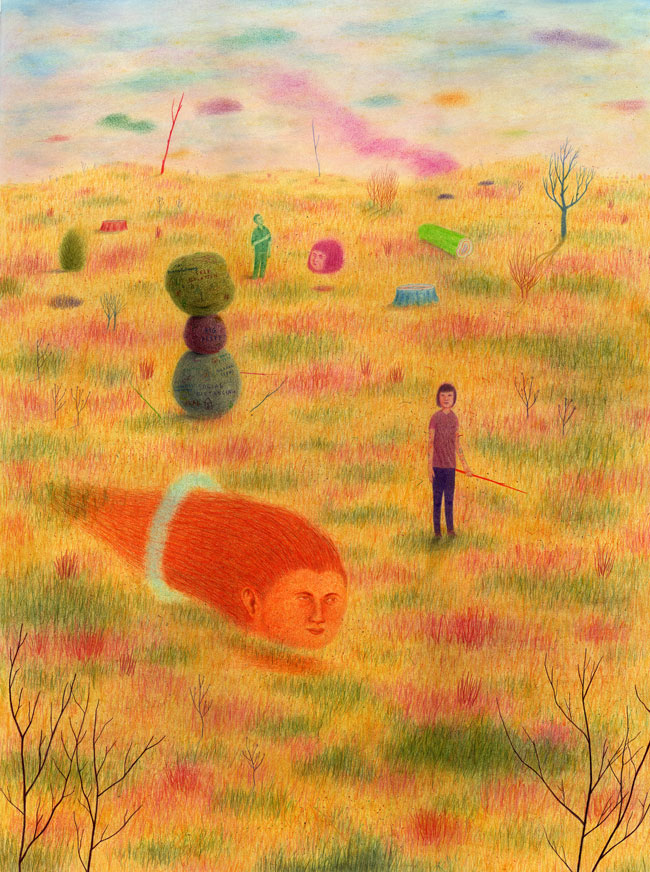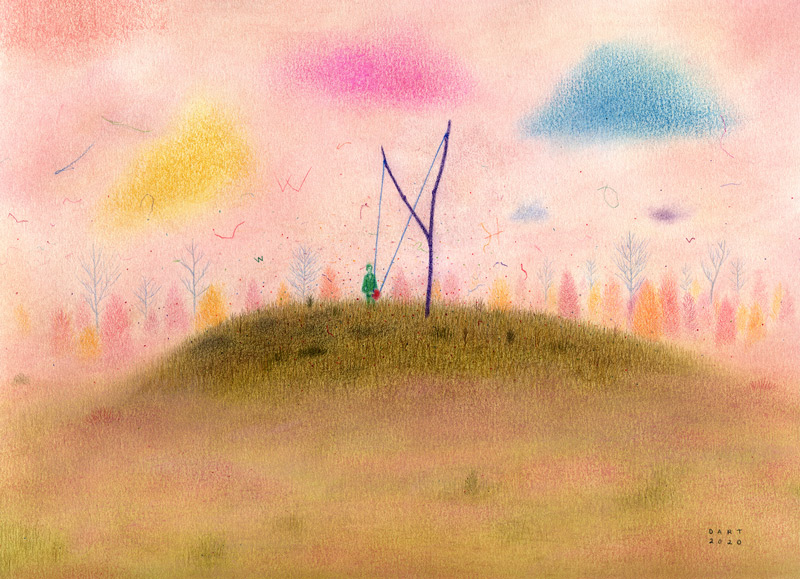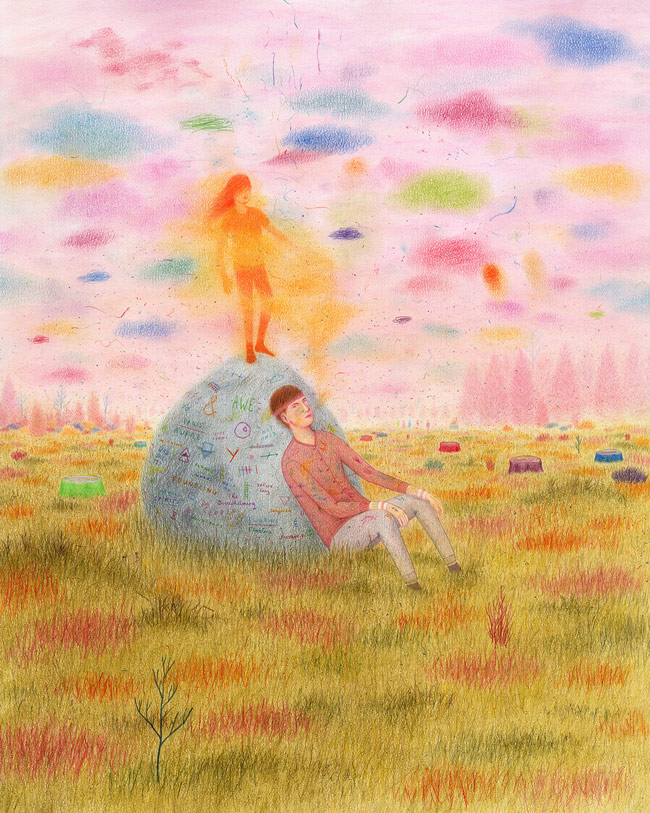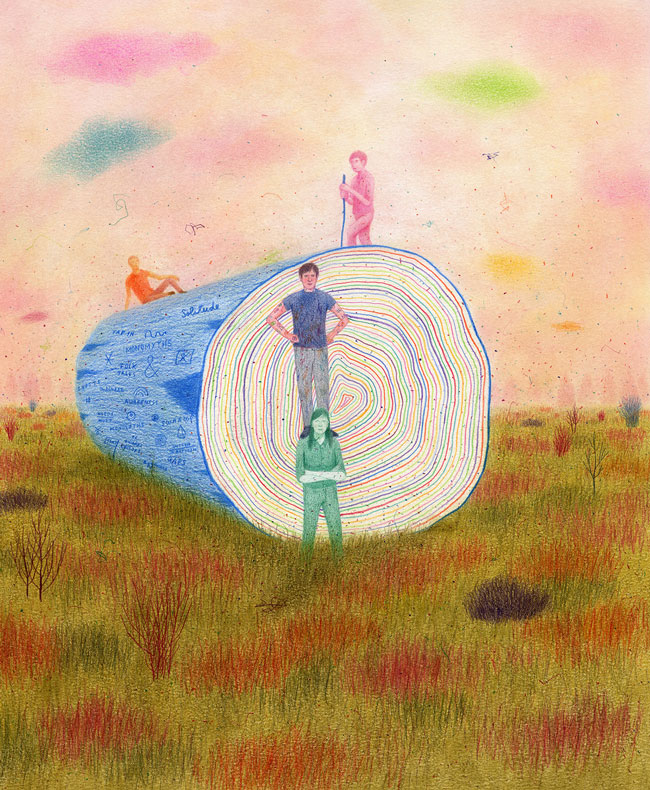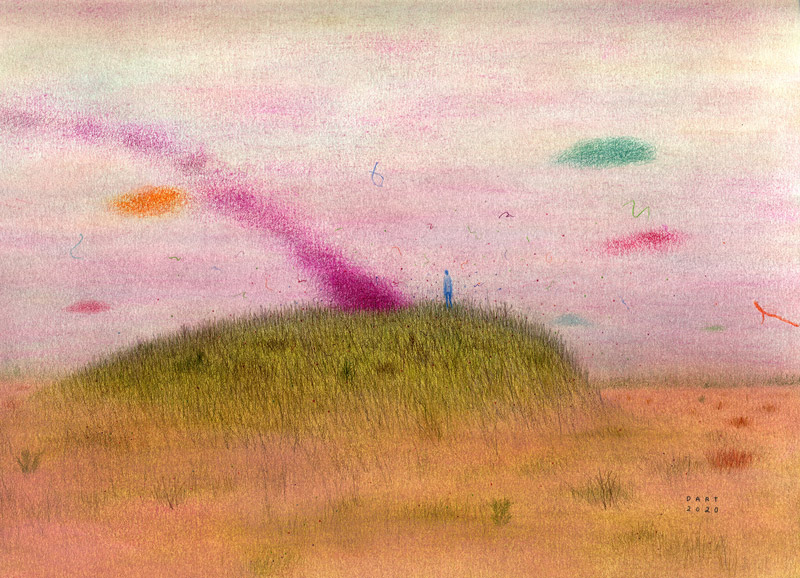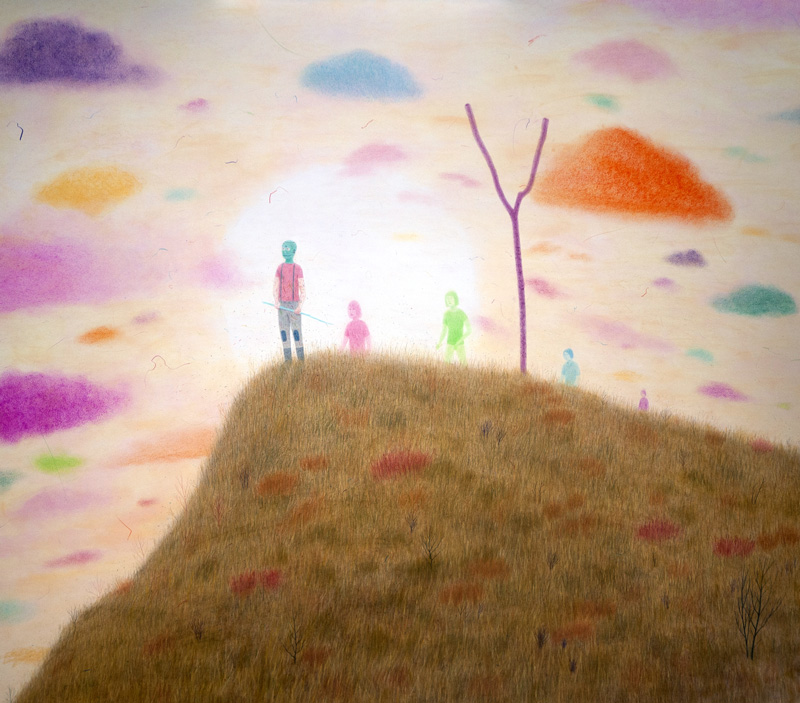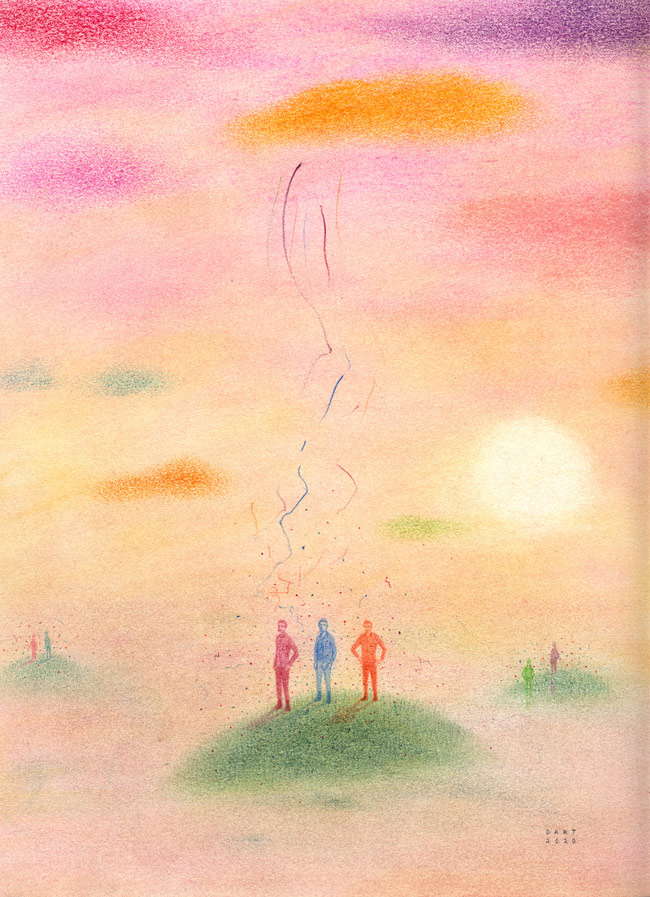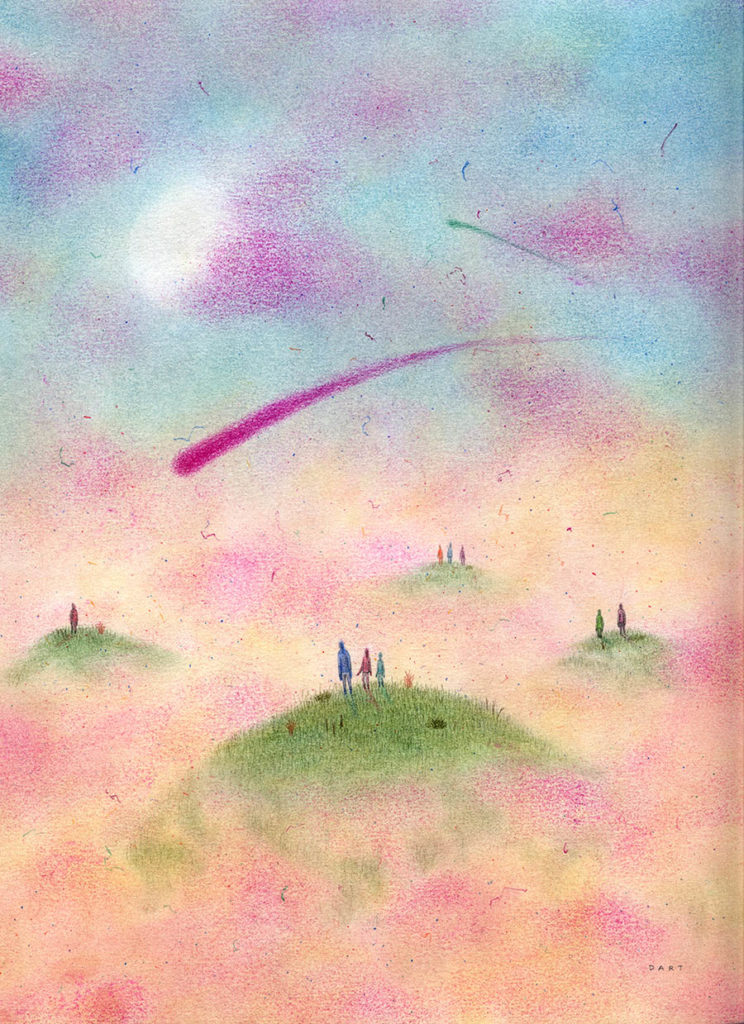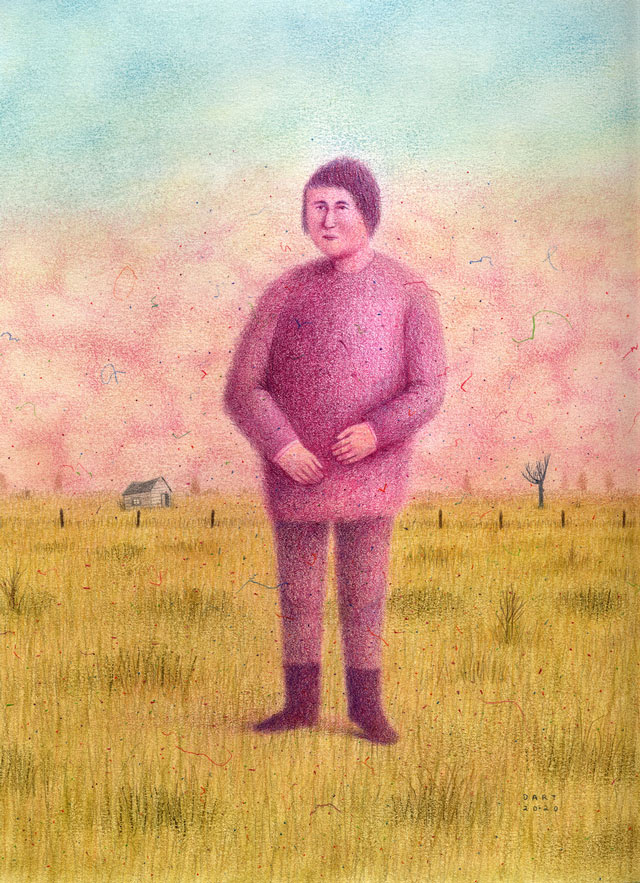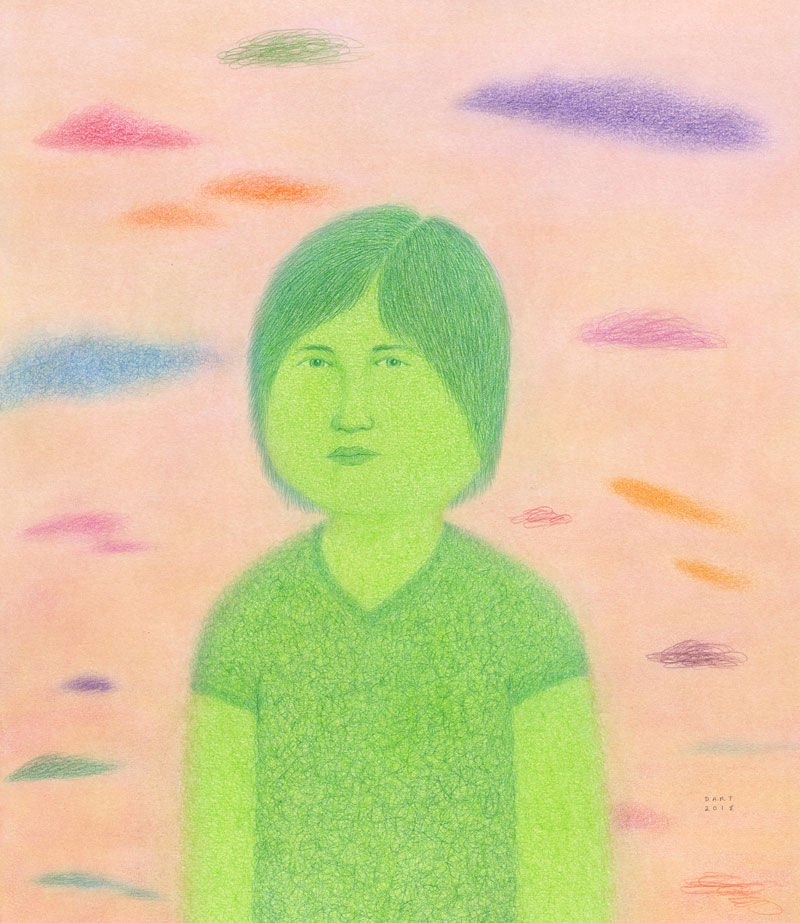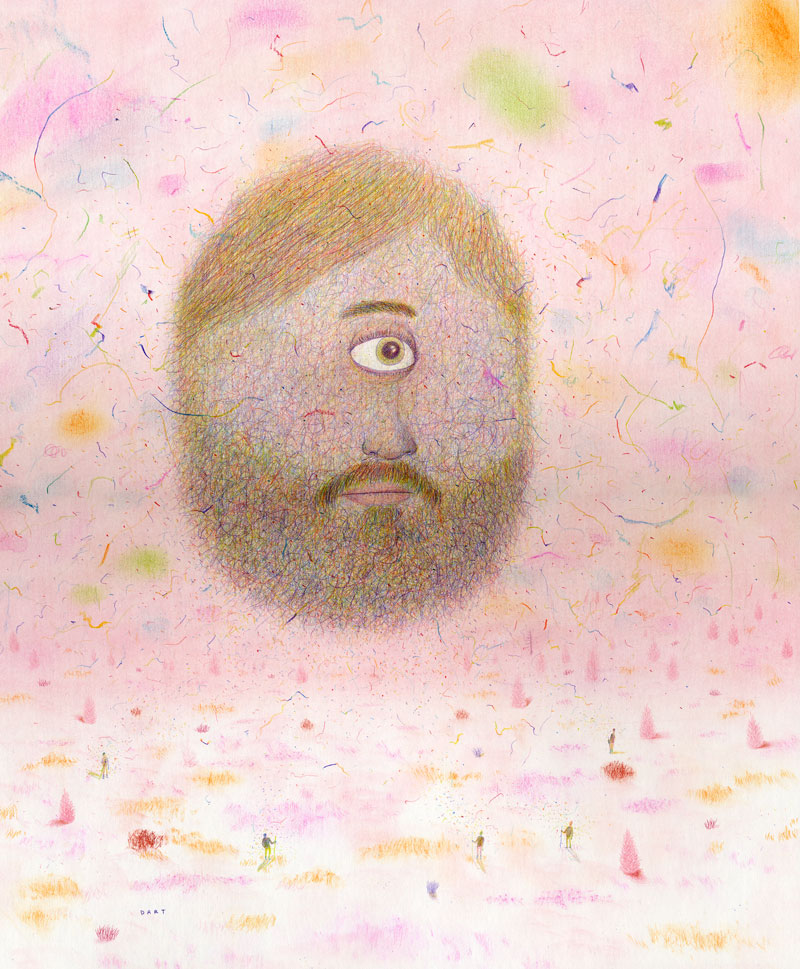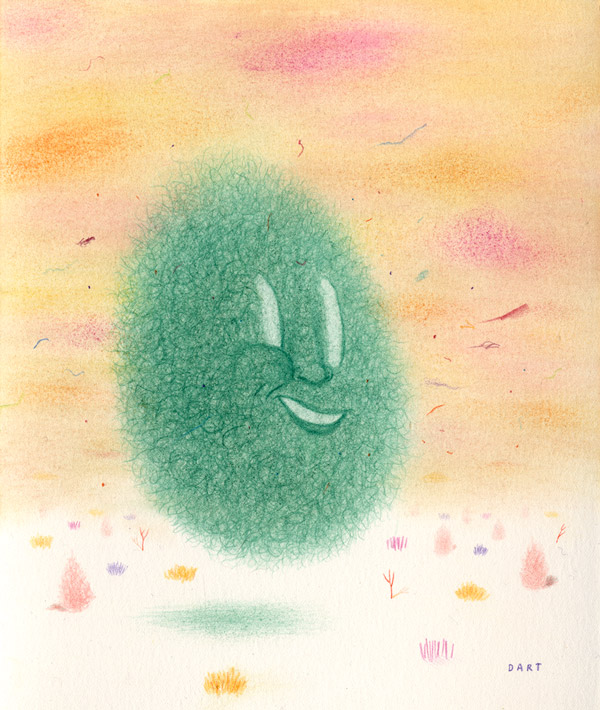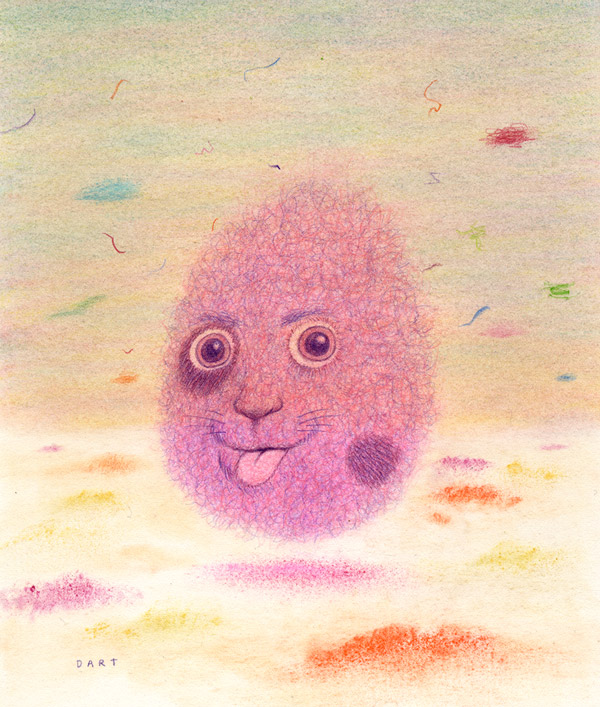CHAPTER IV: OLD FIELDS, REVISITED
Read more below about Chapter IV of the Yawnder series.
And check out Chapter I, Chapter II and Chapter III.
The drawings that comprise this chapter of the Yawnder series were created for two separate solo exhibitions: The Age of Fathoms at Galerie Youn in Montreal and Old Fields, Revisited at Gallery Jones in Vancouver.
I began this series of drawings in pre-pandemic times as a continuing investigation into some new themes that I had been exploring in my work including the quality of onliness, the ecology of old fields, theories of meditation and awareness, and transitional states. These new topics evolved from observations of the changing landscape in the rural surroundings of my home as well as from personal events in my life. Little did I know that, by the time I was putting the finishing touches on the pieces for the Old Fields, Revisited exhibition in the Spring 0f 2020, the resulting images would depict an apt sentiment for the state of global isolation and the new distance existence that resulted from the Covid-19 pandemic.
This body of work expands on the ever-evolving narrative of the Yawnder saga as the protagonist, Jiggs, has an emotional connection with one of the giant Foremoms that leads to a sudden growth, as seen in Foremom’s Tears. A large gathering of folks has followed him within Beyawnder, as we seen in Would Be, and a changing of the seasons is finally occurring. And yet, Jiggs follows a call towards a new place where we are introduced to a new cast of youthful characters in an abandoned landscape.
This journey takes Jiggs to the old fields – an ecological term that describes lands that were once maintained, only to be abandoned – where a natural succession occurs that can either result in the rapid return of a native ecosystem or change toward a completely different system with often unpredictable dynamics and impacts. These emerging ecosystems found in the marginal, deserted lands of my rural community have provided a backdrop for a new cast of wayward young characters making their own marks amid uncertainty. The wide-open, abandoned old fields provide a paradoxical landscape for the youthful explorers who find themselves in uncharted territory, inundated by swarms of sparks and floaters. These are the overlooked spaces between places, symbolic of the gaps between all things, that may be reconsidered as we look for answers in these unprecedented times when the need for distance is bringing new perspectives to help solve extreme challenges.
Found in a moment of reflection and covered in signs of experience, the position of these youthful wanderers within their surroundings is unclear. Whether they are overwhelmed by a siege in a foreboding realm that they have stumbled into or contributors to the chaos in a wondrous region of their own making, they appear comfortable with the situation and ready to take on whatever comes their way. The comfort in being alone is an attribute associated with ‘only children’. As I was examining the nature of onliness, I came to notice that the constant sense of being on your own, and the resulting coping strategies, wasn’t just a quality popular among onlies, like myself; this feeling pervaded our contemporary culture. Despite being ‘connected’ more than ever through digital platforms, there is a great sense of disconnection felt by people across generations. How this sentiment will manifest in the era of distance existence will be crucial to the well-being of our society.

